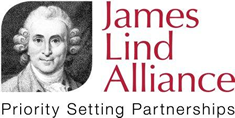Gathering uncertainties
Methods used (eg, survey, focus groups, interviews)
Survey.
| Number | % | |
| Total respondents (across all methods) | 254 | 100 |
| Total patients and carers | 186 | 73.2 |
| Total health and care professionals | 180 | 70.9 |
| Total number of original uncertainties submitted | 574 | 100 |
| Original uncertainties in scope | 505 | 88 |
| Original uncertainties out of scope | 69 | 12 |
Interim prioritisation
Methods used (eg, survey, focus groups, interviews):
Survey.
| Number | % | |
| Total number of indicative questions (answered & unanswered) | 49 | 100 |
| Number of verified answered questions | 0 | 0 |
| Number of verified unanswered questions | 49 | 100 |
| Number of verified unanswered questions included in the interim prioritisation | 49 | |
| Total respondents (across all methods) | 233 | 100 |
| Total patients and carers | 68 | 29.1 |
| Total health and care professionals | 158 | 67.8 |
| Number of questions taken to final workshop | 24 |
Final priority setting workshop
| Number | % | |
| Total participants | 22 | 100 |
| Total patients and carers | 14 | 63.6 |
| Total health and care professionals | 8 | 36.4 |
Notes
For the first survey, we allowed people to identify with multiple categories (e.g., patient, healthcare provider), so some people chose more than one option. For the second survey, respondents could choose only one option. We also included the category of “know someone who has had surgery/anesthesia,” which is separate from the categories of patients and carers.
